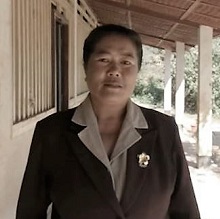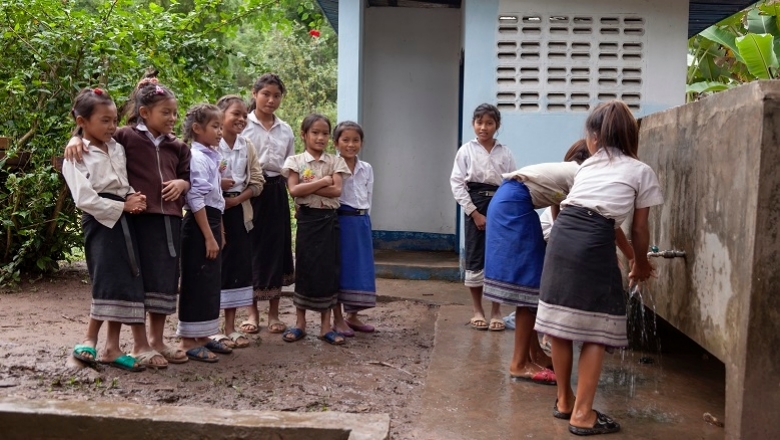It’s recess time, and primary school students of Huaichai village are enjoying their recreation time in a large field next to their school building. When they need a bathroom break, students must traverse the field and down the hill to the closest latrines. They then walk back up the hill, across the field, and to the school building, where water buckets and soap are available.
Ms. Phaeng Soulichanh, school principal, is happy that most students already understand proper handwashing practices, and that the teachers consistently reinforce this message, while making soap available. However, she admits, the facilities they have to work with are not ideal.
“We would like toilets closer to our school, so they are more convenient for preschool and first grade students to use. These students cannot go to toilets by themselves and a teacher needs to accompany them,” she says. “The school needs hand washing sinks and faucets,” she continues, gesturing to the current system of water buckets, used to compensate for seasonal water shortages.


